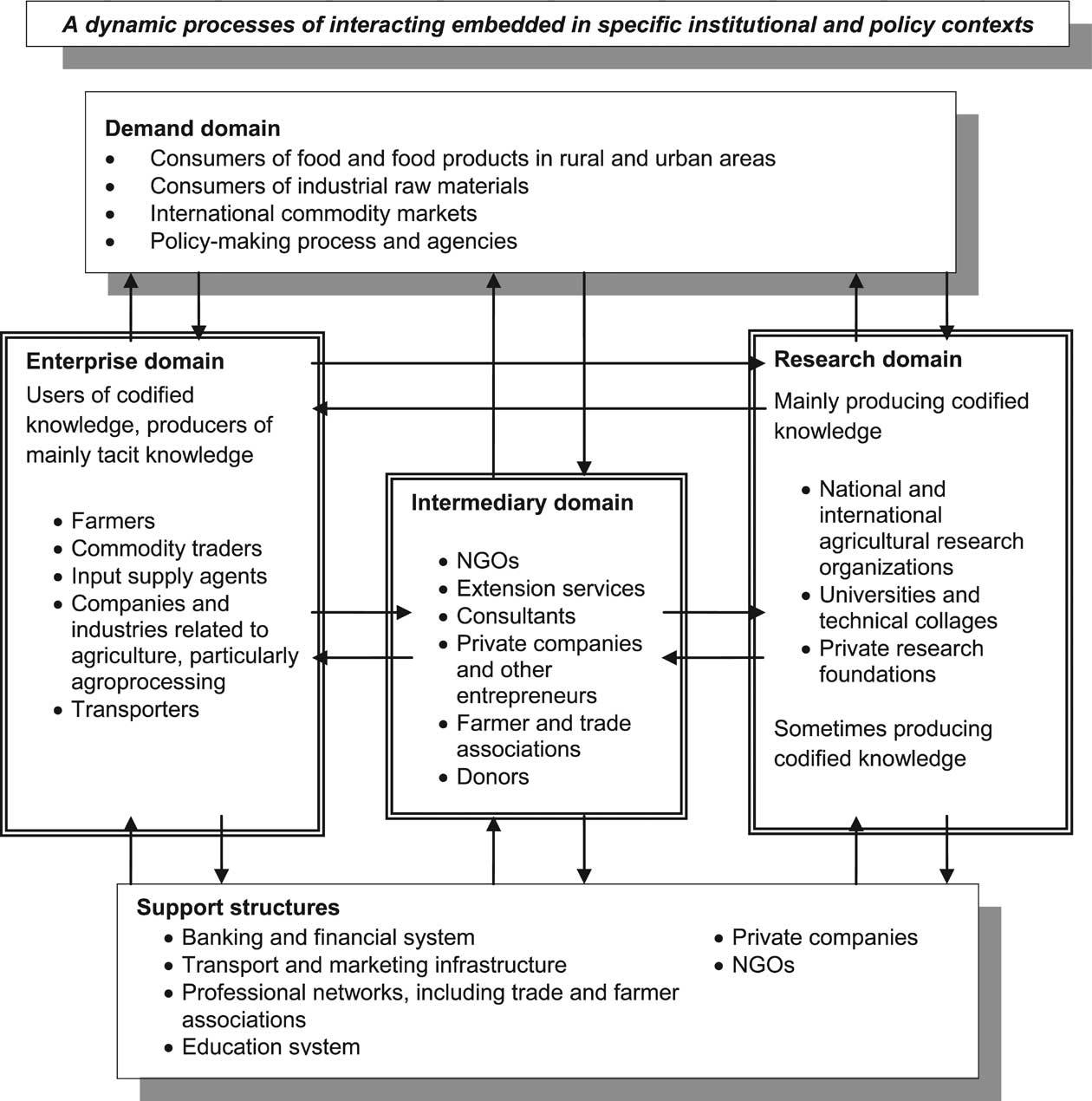
| Previous | Return to table of contents | Search Reports | Next |
| « Back to weltagrarbericht.de | ||
Development and Sustainability Goals: AKST Options | 185

Figure 5-1. Elements of an agricultural innovation system. Source: Adapted from Arnold and Bell, 2001; World Bank, 2006.
5.6.2 Policies |
|
Having a sound policy does not ensure better compliance to guidelines or better performance of the system. Firstly, the countries in the region vary in their capacity to implement policies. There are significant gaps in the capacity of several countries in the ESAP region to implement policies related to biosafety, IPR and food quality standards. For instance, countries intending to implement transgenic and other developing technologies will need to ensure that their infrastructure is sufficient to support the safe development, transfer and application of these technologies with special attention to developing relevant policies, information systems and training in biotechnology risk assessment and biosafety procedures. Methods and results of environmental risk assessments, as well as a model policy framework could be shared between countries that have similar agricultural environments, thus reducing the burden of proof for any one country. |
| Previous | Return to table of contents | Search Reports | Next |
| « Back to weltagrarbericht.de | ||